Bulbs
Flower Basics
Flower Beds & Specialty Gardens
Flower Garden
Garden Furniture
Garden Gnomes
Garden Seeds
Garden Sheds
Garden Statues
Garden Tools & Supplies
Gardening Basics
Green & Organic
Groundcovers & Vines
Growing Annuals
Growing Basil
Growing Beans
Growing Berries
Growing Blueberries
Growing Cactus
Growing Corn
Growing Cotton
Growing Edibles
Growing Flowers
Growing Garlic
Growing Grapes
Growing Grass
Growing Herbs
Growing Jasmine
Growing Mint
Growing Mushrooms
Orchids
Growing Peanuts
Growing Perennials
Growing Plants
Growing Rosemary
Growing Roses
Growing Strawberries
Growing Sunflowers
Growing Thyme
Growing Tomatoes
Growing Tulips
Growing Vegetables
Herb Basics
Herb Garden
Indoor Growing
Landscaping Basics
Landscaping Patios
Landscaping Plants
Landscaping Shrubs
Landscaping Trees
Landscaping Walks & Pathways
Lawn Basics
Lawn Maintenance
Lawn Mowers
Lawn Ornaments
Lawn Planting
Lawn Tools
Outdoor Growing
Overall Landscape Planning
Pests, Weeds & Problems
Plant Basics
Rock Garden
Rose Garden
Shrubs
Soil
Specialty Gardens
Trees
Vegetable Garden
Yard Maintenance
How to Grow Niagara Grape Vines
How to Grow Niagara Grape Vines. Growing Niagara grapes (Vitis 'Niagara') in a home garden requires a few steps. Grapes need pruning and training, but once you master those tasks, you'll find the harvest worth the effort. Niagara grapes are a white grape, bearing large, sweet fruit suitable for table use, jams, juice and wine. The grapes are very...
Growing Niagara grapes (Vitis 'Niagara') in a home garden requires a few steps. Grapes need pruning and training, but once you master those tasks, you'll find the harvest worth the effort. Niagara grapes are a white grape, bearing large, sweet fruit suitable for table use, jams, juice and wine. The grapes are very cold hardy, thriving in USDA Plant Hardiness Zones 5 to 7, and will produce vigorously for 20 years or more.
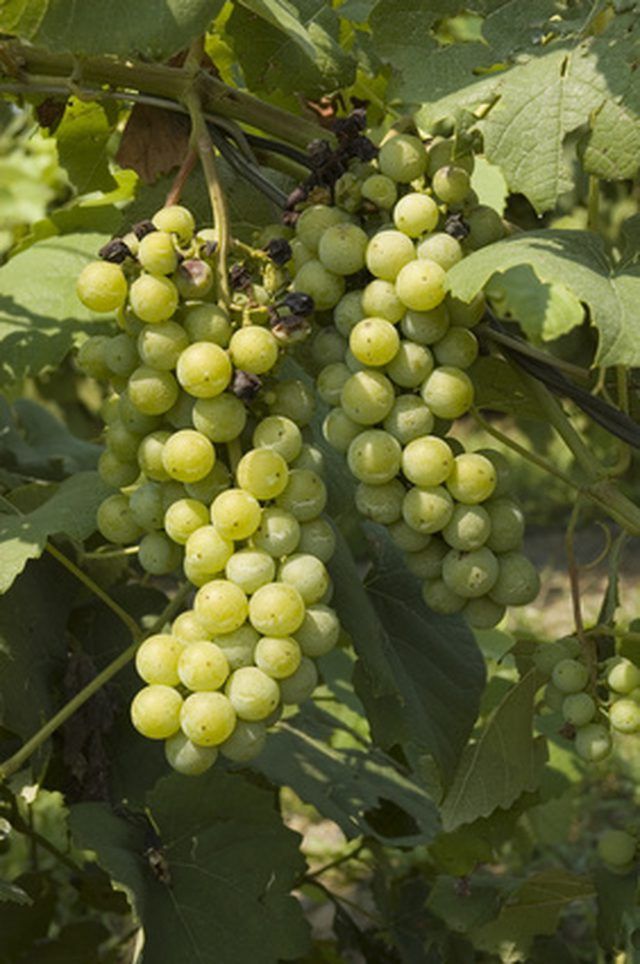
Things You'll Need
Compost
Shovel
Grape Plants
Hose
Hand pruning shears
Trellis, fence, or stakes and wires
Rope
Hoe
Knife
Step 1
Spread a layer of manure or compost on the soil. Use half a 40-pound bag for each plant. Mix the compost into the soil by digging into the earth with a shovel to a depth of 1 foot. Turn the soil over as you go, and remove any rocks, weeds and dirt clods.

Step 2
Dig a hole 1 foot deep and 1 foot wide with a shovel. Remove the plant gently from its pot. Set the plant in the hole and spread out the roots. The crown of the plant (where the branches and roots meet) should sit about 1 inch below the soil surface.
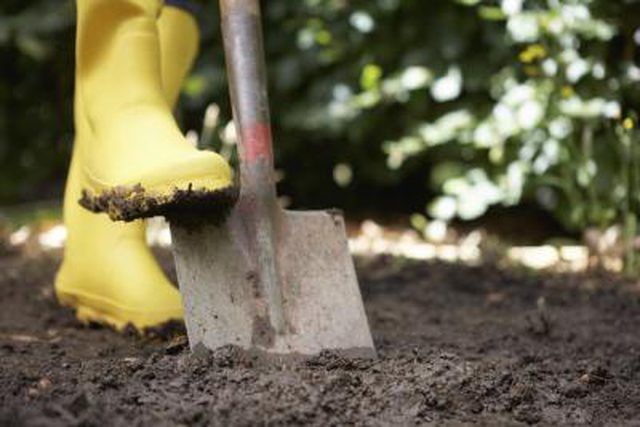
Step 3
Fill the hole half-full with water, using a hose. Let the water drain. Push soil into the hole with your hands until the hole is completely filled. Pat the soil firmly in place. Water for 10 to 15 minutes.

Step 1
Pinch off all but 2 or 3 of the buds--the little swelling protrusions--on the strongest stem in early spring with your fingers.

Step 2
Let the central trunk develop 2 strong canes (branches) when it grows to about 1 foot tall. Tie these canes with string to your fence or trellis so they are growing in opposite directions horizontally. Prune back any other developing canes with pruning shears the second year.
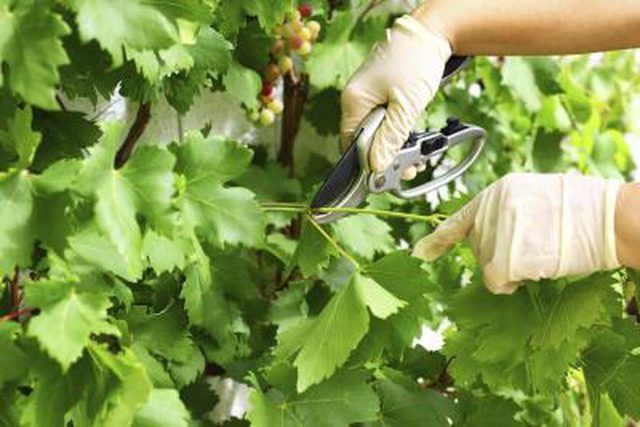
Step 3
Tie 2 more canes 1 or 2 feet higher on your fence as you did the previous spring. You'll have a strong central branch with 4 horizontally growing canes by year three. Continue training the grape vine in this manner every spring until the plant reaches the top of your fence or trellis.

Step 4
Prune back any other canes consistently, and dispose of all cuttings and fallen leaves.

Step 1
Water grapes with a hose or sprinkler once a week in dry conditions. Water deeply for 15 to 20 minutes.
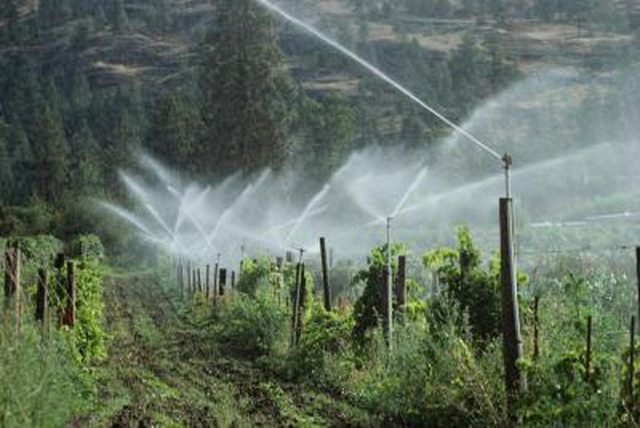
Step 2
Pull weeds from around the grape plant or hoe lightly.
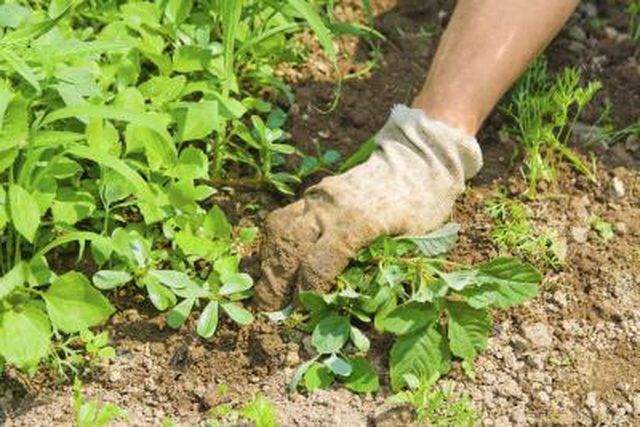
Step 3
Taste the grapes in mid August to September to see if they are sweet and ripe. Cut ripe grapes off the vine with a sharp knife.
